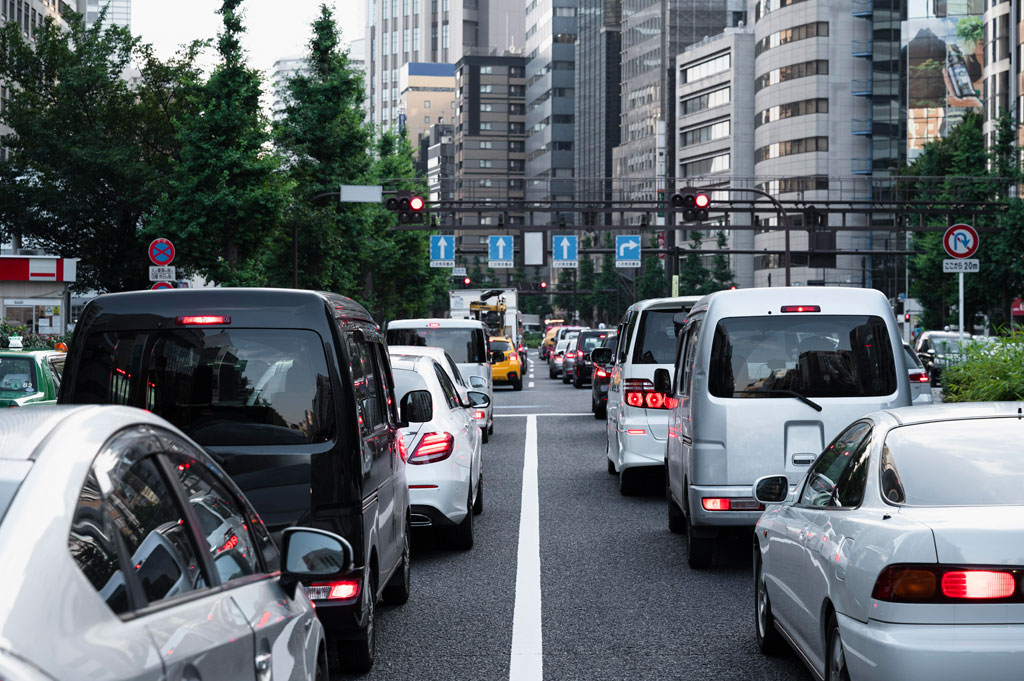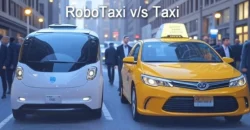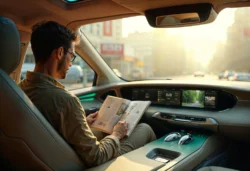India’s rapid urbanization and growing vehicle population have turned traffic management into a critical challenge. With over 326 million registered vehicles and cities like Bengaluru losing 260 hours annually per driver to congestion, the need for innovative solutions is urgent. India’s urban centers, from Mumbai’s bustling streets to Delhi’s congested highways, face a staggering traffic crisis, with over 1.5 million vehicles added annually and cities like Bengaluru losing 600,000 man-hours daily to gridlock, per a 2023 study by the Boston Consulting Group. As India advances its Smart Cities Mission, aiming to transform 100 cities into sustainable urban hubs, AI traffic management emerges as a game-changer. By leveraging artificial intelligence to optimize traffic flow, reduce congestion, and enhance safety, AI for urban mobility is paving the way for smart cities India.
In 2025, technologies like machine learning, computer vision, and predictive analytics are revolutionizing how Indian cities manage their roads. This article explores how AI improves traffic management in India, highlighting AI solutions for traffic congestion India 2025, real-world applications, challenges, and the path to smarter urban planning. This article explores how AI can revolutionize traffic management in India, highlighting current initiatives, benefits, challenges, and the road ahead.
Table of Contents
- The Traffic Crisis in India
- Why India Needs AI for Traffic Management
- AI’s Role in Transforming Traffic Management
- AI-Powered Smart Traffic Systems in Indian Cities
- Benefits of AI in Traffic Management
- Challenges of Implementing AI Traffic Solutions in India
- Future of AI Traffic Management in India
- FAQs: AI and Traffic Management in India
- Conclusion
The Traffic Crisis in India
India’s roads are among the world’s most congested, with cities like Delhi and Mumbai facing delays that cost billions in lost productivity—estimated at $22 billion annually for major urban centers. The country reports over 450,000 road accidents yearly, resulting in more than 150,000 deaths, often due to human errors like overspeeding and traffic violations. Rapid population growth, inadequate infrastructure, and diverse traffic patterns—ranging from two-wheelers to heavy trucks—exacerbate the problem. Traditional traffic management, reliant on manual oversight and fixed signal timings, struggles to cope with this complexity.
Why India Needs AI for Traffic Management
India’s traffic woes are legendary, with cities like Delhi, Mumbai, and Bengaluru ranking among the world’s most congested, according to the 2024 TomTom Traffic Index. The economic cost is steep—India loses approximately $22 billion annually due to traffic delays, per a 2023 NITI Aayog report. Rapid urbanization, with 34% of India’s 1.4 billion population now urban (projected to hit 50% by 2050), exacerbates the strain on outdated infrastructure. Traditional traffic management systems, reliant on manual signals and limited data, struggle to cope. AI traffic management offers a solution by analyzing real-time data from cameras, sensors, and GPS to optimize traffic flow, predict congestion, and enhance safety. Under India’s Smart Cities Mission, launched in 2015, AI is a cornerstone for building intelligent transportation systems, making AI for smart city traffic management India critical for urban progress.
AI’s Role in Transforming Traffic Management
AI leverages technologies like machine learning, computer vision, and IoT to create Intelligent Traffic Management Systems (ITMS) that adapt to real-time conditions.
Here’s how AI improves traffic management in India across key applications:
1. Adaptive Traffic Signal Control
AI-powered systems dynamically adjust signal timings based on real-time traffic data from cameras and sensors. In Bengaluru, the Adaptive Traffic Control System (BATCS) manages 165 intersections, reducing travel times by 20–25% during peak hours. Similarly, Kolkata Police uses AI to calculate queue times and optimize signal phases, minimizing delays. This adaptability ensures smoother flow, especially during unpredictable events like IPL matches, where Bengaluru’s system cut post-match clearance from three hours to 90 minutes.
2. Real-Time Traffic Monitoring and Prediction
AI analyzes data from CCTV cameras, GPS, and IoT devices to predict congestion and identify bottlenecks. Chandigarh’s 2,000 AI-enabled cameras autonomously detect violations, while Pune’s ITMS monitors traffic patterns to enhance safety. Predictive analytics, as seen in Bangalore’s ITSMS, anticipates peak travel times, enabling proactive rerouting and signal adjustments. This reduces idle time, saving an estimated 15–20% in fuel costs.
3. Accident Prevention and Safety Enhancement
AI detects hazardous conditions and enforces traffic rules. Bengaluru’s AI cameras issue e-challans for violations like helmet-less riding, while Delhi’s planned ITMS will use radar-based systems to monitor red-light violations. The iRASTE project in Nagpur uses collision avoidance technology to reduce accidents by up to 60%, targeting black spots with dynamic risk assessments. Onboard Driver Assistance Warning Systems (ODWAS) provide real-time alerts to public transport drivers, further improving safety.
4. Congestion Management and Route Optimization
AI-powered navigation apps like Google Maps suggest alternate routes based on live traffic data, while systems like BATCS optimize vehicle flow on critical corridors like Bengaluru’s Outer Ring Road, cutting travel times by 30%. During large events, AI adjusts signals and reroutes traffic, as demonstrated in Atlanta during the Super Bowl, a model India could adopt for events like the Kumbh Mela.
5. Environmental Sustainability
By reducing stop-and-go traffic, AI lowers fuel consumption and emissions. Bengaluru’s AI-managed intersections contribute to a 15–20% fuel saving, aligning with India’s push for electric vehicles and sustainable urban mobility under the Smart Cities Mission. This also mitigates air pollution, a pressing public health concern in cities like Delhi.
AI-Powered Smart Traffic Systems in Indian Cities
India’s Smart Cities Mission has spurred investments in AI-powered smart traffic systems India, with cities like Bengaluru, Delhi, and Pune leading the charge. These systems integrate AI with IoT, 5G, and cloud computing to create intelligent transportation networks. Key implementations include:
- Bengaluru’s B-TRAC: The Bangalore Traffic Improvement Project uses AI to manage 300+ adaptive signals, cutting travel times by 15% in 2024, per city data.
- Delhi’s ITMS: Combines AI with 1,200 cameras to monitor and predict traffic, reducing congestion on key corridors by 10%, per a 2024 NITI Aayog report.
- Pune’s Smart Traffic Signals: AI-driven signals prioritize emergency vehicles and public transport, improving flow by 18%, according to Pune Municipal Corporation.
- Surat’s Safe City Project: Uses AI for real-time violation detection, with a 30% drop in traffic violations since 2023, per Surat Police.
- Chandigarh: AI-enabled cameras enforce rules, reducing human error in violation detection.
- Sikkim: The first state to launch an AI-driven system, automating document verification and e-challan issuance.
- Kerala: Targets a 50% accident reduction by 2024 with AI-based cameras on key roads.
These systems leverage AI traffic optimization in Indian cities, aligning with global trends where AI reduces urban congestion by 10–20%, per a 2025 McKinsey report.
Benefits of AI in Traffic Management
- Efficiency: Reduced travel times (up to 30% in Bengaluru) and optimized signal cycles improve commuter experiences.
- Safety: Lower accident rates through real-time hazard detection and rule enforcement.
- Economic Gains: Savings from reduced fuel use and productivity losses, estimated at millions annually.
- Sustainability: Decreased emissions support India’s climate goals.
- Scalability: AI systems can expand with urban growth, adapting to new challenges.
Challenges of Implementing AI Traffic Solutions in India
Despite its potential, deploying AI solutions for traffic congestion India 2025 faces hurdles:
- Infrastructure Gaps: Many Indian cities lack sufficient cameras, sensors, or 5G connectivity, limiting AI’s effectiveness. Only 20% of India’s urban roads are digitized, per a 2024 MoRTH report.
- Data Privacy Concerns: AI systems collecting real-time vehicle and commuter data raise privacy issues, especially with India’s Digital Personal Data Protection Act (2023).
- High Costs: Deploying AI systems costs ₹50–100 crore per city, per NITI Aayog, straining municipal budgets.
- Skill Shortages: India needs 100,000+ AI professionals by 2027 to scale smart traffic systems, per NASSCOM.
- Public Resistance: Commuters may resist AI-enforced fines or distrust automated systems, requiring awareness campaigns.
Addressing these requires public-private collaboration, open-source protocols, and robust cybersecurity measures, as seen in global models like London’s UTMC system.
Future of AI Traffic Management in India
India’s traffic management future hinges on integrating AI with infrastructure development and policy reforms. Expanding metro networks, promoting electric vehicles, and implementing congestion pricing—complementing AI systems—can create a holistic mobility ecosystem. The Ministry of Road Transport and Highways’ plan to replicate Bengaluru’s model in Delhi, Mumbai, and Chennai signals a nationwide push. With the global ITMS market projected to grow from $12.91 billion in 2024 to $47.10 billion by 2034, India is well-positioned to lead, leveraging its Smart Cities Mission and technological expertise.
By 2030, AI could transform India’s urban mobility:
- Autonomous Vehicles: AI-driven self-driving cars, piloted in Gurugram by 2025, could reduce accidents by 30%, per IIT Madras.
- Drone Traffic Monitoring: AI-powered drones, tested in Chennai, could monitor traffic in real time, covering 50% more area than cameras.
- Predictive Urban Planning: AI models forecasting urban growth could guide infrastructure investments, as proposed by NITI Aayog for 2030.
- 5G Integration: With India’s 5G rollout expanding, AI systems will process data faster, enabling real-time traffic solutions by 2027.
FAQs: AI and Traffic Management in India
How Can AI Reduce Traffic in India?
AI optimizes signal timings, predicts congestion, and automates enforcement using real-time data from cameras and sensors, cutting delays by 10–20% in cities like Bengaluru.
What Are AI Traffic Management Solutions in India?
Solutions include adaptive signals (B-TRAC), predictive analytics (Delhi ITMS), violation detection (Mumbai e-challans), and public transport optimization (Hyderabad Metro).
How Does AI Help Smart Cities in India?
AI enhances smart cities India by improving traffic flow, reducing emissions, and integrating transport systems, supporting the Smart Cities Mission’s sustainability goals.
Why Use AI for Traffic Management in Indian Cities?
AI tackles AI for congested roads India by analyzing data to optimize traffic, reduce accidents, and cut economic losses, saving billions annually.
Conclusion
AI offers a lifeline to India’s traffic woes, transforming chaotic roads into efficient, safe, and sustainable networks. From Bengaluru’s pioneering BATCS to Sikkim’s innovative system, the country is laying the groundwork for smarter cities. However, success depends on overcoming infrastructure and equity challenges through strategic investments and inclusive planning. As AI continues to evolve, it promises not just to unclog roads but to redefine urban living, making commuting a seamless part of India’s growth story.







